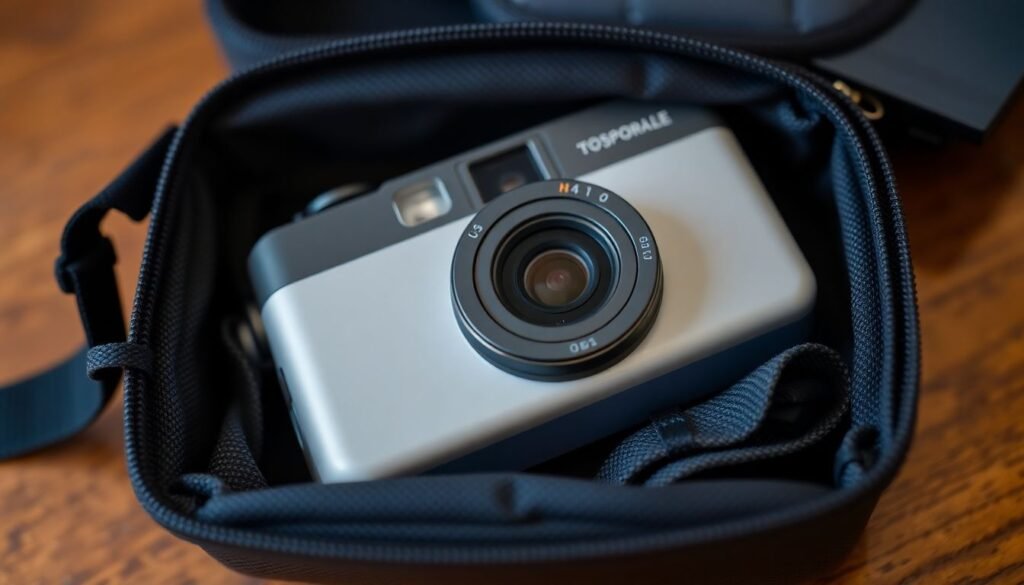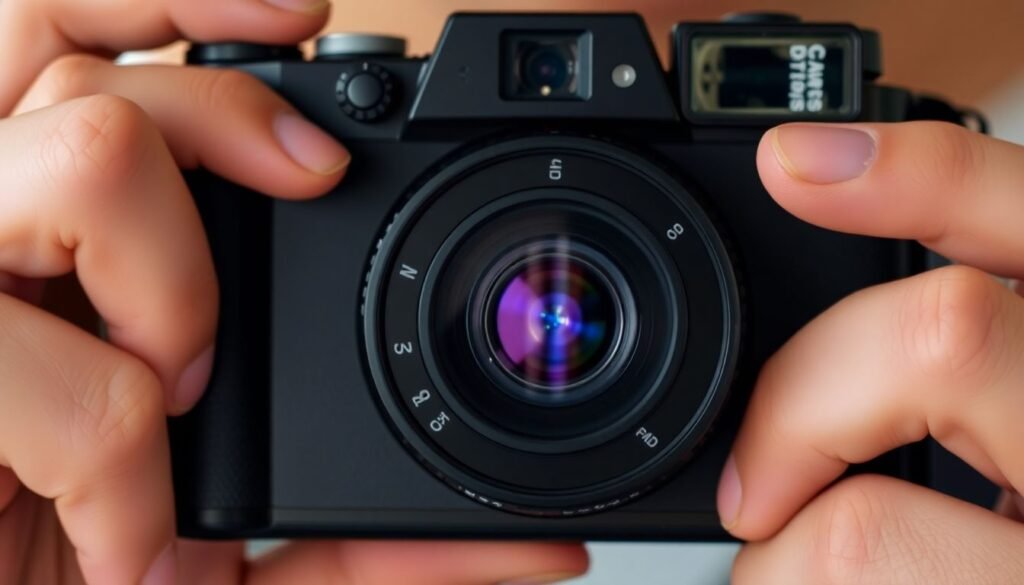Physical Address
304 North Cardinal St.
Dorchester Center, MA 02124
Physical Address
304 North Cardinal St.
Dorchester Center, MA 02124

Disposable cameras have made a huge comeback in recent years. There’s something nostalgic and exciting about snapping a photo, waiting to finish the roll, and then seeing what you’ve captured when the film gets developed.
But while these cameras may be easy to use, there are still some best practices to follow to ensure that your photos turn out great. In this guide, we’ll walk through the best ways to care for a disposable camera, so you get the most out of each shot.
A disposable camera is a single-use film camera preloaded with a roll of film, usually offering 27 to 39 exposures. Unlike digital cameras, you don’t get instant results, but that’s part of the charm!
These cameras gained popularity in the late 1980s as an affordable, convenient option for capturing memories, and today, they’re still loved for their simplicity and retro vibe.

Why should you worry about caring for a disposable camera if it’s meant to be thrown away?
Well, even though it’s disposable, taking proper care of the camera ensures your pictures come out clear, your flash works when you need it, and you avoid damaging the film.
Simple practices can make a big difference in the quality of your photos, from handling to storing the camera properly.
One of the simplest ways to care for your disposable camera is by keeping it clean. The lens is small and easily prone to smudges, dust, or fingerprints, which can distort your images. Use a microfiber cloth to gently wipe the lens if needed, but avoid using harsh chemicals or scratching the surface.
The built-in flash is crucial for low-light settings, so you want to make sure it’s functional when you need it. Don’t cover the flash with your fingers when taking a shot. Also, keep the flash housing free from dirt or debris that could block its light. When not in use, store the camera carefully to avoid accidental flash triggering, which could waste battery power.

Humidity and heat are enemies of film. If your disposable camera is exposed to too much moisture or warmth, the film can degrade, causing washed-out colors or foggy images. Keep your camera in a dry, cool place when not in use, and avoid storing it in your car on a hot day.
Prolonged exposure to sunlight can damage the film inside your camera. Sunlight can cause light leaks, which can lead to overexposed images or strange colors. If you’re outdoors, keep the camera shaded or tucked away when not snapping pictures.

A disposable camera might seem durable, but it’s still vulnerable to physical damage. To protect it from drops, scratches, or impacts, carry it in a small camera case or padded bag. This is especially important if you’re carrying it in a bag with other items that could bump or scratch it.
Accidental drops can not only damage the camera’s outer shell but also misalign the internal components, ruining your shots. Shaking the camera too hard can shift the film inside and affect the exposure of your photos. Handle it gently to avoid any accidents.

Most disposable cameras have a set number of exposures (often between 24 and 36). It’s easy to lose track of how many you’ve taken, especially during a busy event or trip. Pay attention to the number shown on the camera’s frame counter so that you’re not left surprised when you reach the last shot.
If the film doesn’t advance smoothly after taking a photo, don’t force it. This could lead to tearing the film inside or breaking the internal mechanisms. If the wheel feels stuck, it might mean the roll is finished, and you should get it developed.
The battery in a disposable camera powers the flash, and once it’s drained, your flash won’t work. To maximize battery life, avoid triggering the flash unnecessarily, especially in well-lit environments. Be mindful if the flash begins to take longer to charge after a shot—it could be a sign the battery is running low.

Heat can cause film to become overly sensitive, leading to color shifts or grainy images. Try to keep the camera in a moderate climate, away from extreme heat sources like direct sunlight, car dashboards, or heaters.
Cold weather can also affect your disposable camera, causing the film to become brittle or the battery to drain faster. If you’re taking pictures in cold environments, try to keep the camera inside your coat or a warm place until you’re ready to take a shot.
If you’re traveling with a disposable camera, you might wonder about airport security X-rays. The X-ray scanners used for carry-on luggage can affect undeveloped film, leading to streaks or overexposure. To prevent this, ask security to inspect your camera by hand instead of putting it through the scanner.

Develop your film as soon as possible after taking the last shot. Over time, film can degrade, leading to faded colors or poor image quality. The longer you wait, the more likely you are to lose image quality.
Not all film developers are created equal. To ensure the best results, look for a professional service that specializes in film development. Some drugstores and online services offer convenient options, but check reviews to ensure your photos will be handled with care.
While most disposable cameras are intended for one-time use, some parts can be recycled. Certain brands even allow you to send the camera back for parts to be reused. Alternatively, some people enjoy hacking their cameras to reload them with new film, though this requires some skill.

Common issues like covering the flash, storing the camera in extreme conditions, or mishandling the film can all affect the quality of your photos. Be mindful of these mistakes, and handle your camera with care to get the best results.
Take your time composing your shots and use natural light to your advantage. Disposable cameras excel in daylight, but with the right care, you can also capture great indoor shots using the flash. Be cautious of shooting in overly dark environments, as this can result in grainy or underexposed photos.

Caring for a disposable camera is easy once you know the basics. From keeping it clean and storing it properly to avoiding rough handling and developing the film on time, these simple steps will help you get the best results. Disposable cameras may be low-tech, but with a bit of attention, they can capture your memories beautifully.
How long can I keep a disposable camera before developing the film?
It’s best to develop the film within a few months after taking the last shot. Waiting too long can degrade image quality.
What should I do if my disposable camera gets wet?
Dry it off immediately and keep it in a warm, dry place. Unfortunately, water can cause irreparable damage to the film and electronics inside.
Can I take a disposable camera through airport security?
Yes, but request a hand-check instead of sending it through the X-ray scanner to avoid damaging the film.
How many photos can I take with a disposable camera?
Most disposable cameras allow for 27-39 shots, depending on the model.
Is it possible to replace the battery in a disposable camera?
No, the battery is sealed inside the camera and is not replaceable.